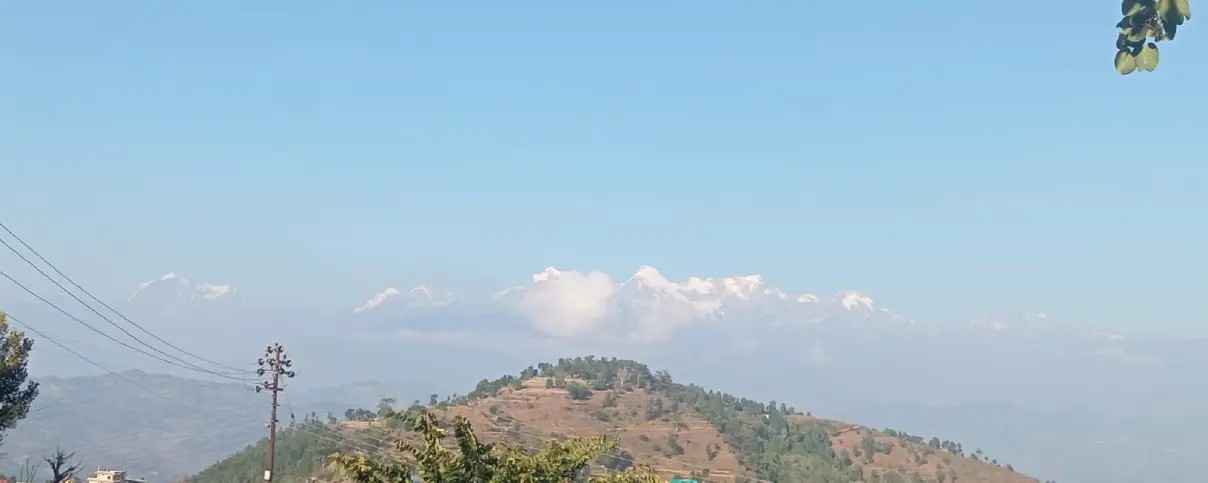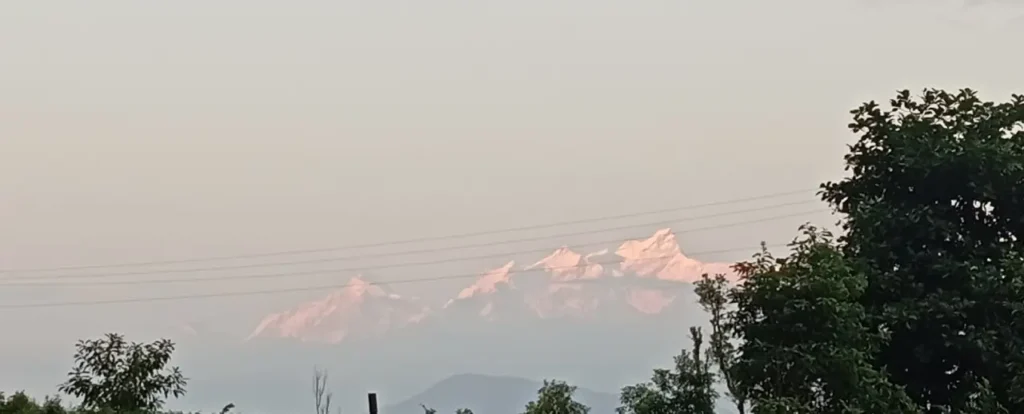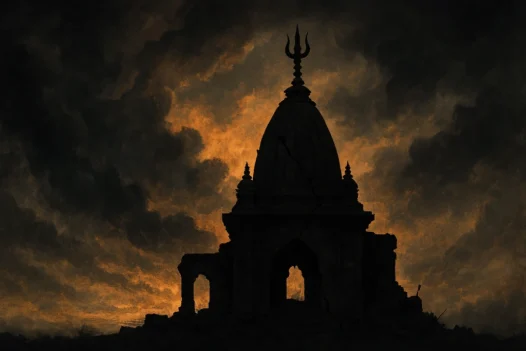The year 2025 marks a significant moment in global environmental consciousness as the world observed the first-ever International Day of Glaciers on 21 March. Nepal, home to some of the highest peaks on Earth, also joined in this global recognition. However, this celebration comes with a sobering reality: year by year, the snow levels in the Himalayas are declining due to climate change and human activities, raising temperatures in mountainous regions. Nepal is no exception to this vulnerability, and the retreat of its glaciers is leaving a profound impact on climate, agriculture, and water resources.
As snow levels dwindle, changes in local weather patterns disrupt traditional farming practices. Crop yields have begun to decline in both quality and quantity, threatening food security, particularly for the elderly and children. Unpredictable rainfall patterns have led to prolonged droughts, severe landslides, and devastating floods, affecting farmers across Nepal and extending into the plains of India. The receding ice levels in the Himalayas are altering the local climate, worsening the availability of water resources, and challenging the resilience of communities dependent on agriculture.
A first-hand account from the Himalayan region
Last December 2024, I had the opportunity to visit the Himalayan region in the western part of Nepal, a place I had often travelled to for studying agriculture in hilly areas and its connection with the snow-clad mountains. The village was perched atop a hill, with scattered houses belonging to the indigenous Magar and Gurung communities, along with people from other castes.
On the second day of my visit, the Magar community was performing a ritual worship ceremony, and I joined them. The ceremony was deeply intertwined with nature—every offering and ritual material was sourced from the environment, and the worship site was located beneath a tree. Curious about this tradition, I approached the headman of the ceremony, who explained that their ancestors resided under trees after passing away, and the trees, in turn, granted them long life. As a result, they gathered there to worship, recall their forebears, and offer prayers.
That evening, after the ceremony, I returned to the house where I had arranged my stay. On the third day, I woke up at 5:00 in the morning and stepped outside my room. As I stood in front of the house, I was greeted by a breathtaking sight—a smiling Himalayan peak with a sparse cover of snow, glowing brilliantly under the golden rays of the rising sun. The entire village and the surrounding hills looked enchanting, almost like a bride adorned for a wedding.
Intrigued, I wanted to know the name of the magnificent peak. I asked the members of the household, but they were unable to answer. Later, I met an elderly villager who finally revealed its name to me—Dhaulagiri. Though the Dhaulagiri mountain range shimmering in the distance—but something was amiss. The snow cover appeared significantly thinner than what I remembered from past years. When I asked an elder about this, he recounted how, decades ago, the mountains used to be blanketed in thick snow, which reflected enough light to erase the night’s darkness even before sunrise. Winter would begin in August and last until mid-April, and the cold was so intense that mosquitoes were nonexistent. “But now,” he lamented, “winter is short, the snow is disappearing, and even mosquitoes have reached the highlands.” He attributed these changes to the smoke and heat emitted by vehicles climbing the hills, suggesting that pollution was accelerating the melting process.
The disappearing Himalayan snow and its consequences
In the first week of February, I visited my birthplace, a village nestled near the Kathmandu Valley. I spent about nine days there, attending to some personal work. During my stay, I met my seniors and childhood friends, reminiscing about the days gone by. My village lies in front of majestic mountain ranges, where one can witness breathtaking views and experience the crisp mountain air from dawn till dusk.
I arrived in the afternoon, eager to take in the familiar sight of the snow-capped peaks. But to my disappointment, the mountains were hidden behind a thick layer of dusty clouds that stretched all the way to my village. The next morning, I tried again, hoping to relive the memories of my childhood—when the Himalayas stood tall, covered in pristine white snow throughout the year. Back then, there were no dusty clouds, no signs of snow melting. But now, the mountains in front of my village looked bare. The once-thick snow had thinned out, leaving patches of exposed black rock. It was difficult to tell whether I was looking at a mountain or a rocky cliff.

A deep sadness settled within me. For years, I had been trying to understand the relationship between mountain snow, water, and agriculture. I walked to the garden in our yard and saw the soil—dry, cracked, lifeless. There was no moisture, no sign of fertility. It looked like dead mud.
Later, I sat down with my mother, and we started talking. She told me how winters were no longer the same. “There used to be cold from August to mid-April,” she said. “It would rain several times a year. But now, the rain comes after long gaps, and many small water streams have disappeared.” She suggested I check the condition of the nearby stream, one that had once flowed close to our house.
She shared memories of how, in the summers of her youth, that stream would carry fresh, flowing water. But now, there was nothing. It had dried up. “Most of the time, the Himalayas are covered in clouds,” she said, “and every year, the snow is vanishing bit by bit.” Then she asked me a question that left me uneasy: “Why is this happening? If the Himalayas lose their snow, won’t the rivers and seas also dry up?”
Her words stayed with me, leaving me with a heavy sense of uncertainty. What was the right answer to her question?
Scientific evidence and global implications
These experiences raise many questions about the future of snow in the mountains and its intricate relationship with the surrounding environment. Every year, the snow is disappearing, and global temperatures continue to rise. Numerous studies have investigated the causes behind this alarming trend, warning the world and proposing solutions to mitigate its impact.
A report published by the BBC on 15 February 2025, authored by Mark Poynting and Erwan Rivault from the BBC Climate & Verify data journalism teams, presented striking data on the decline of Arctic sea ice. At the end of summer, the ice cover has shrunk from an average of 7 million sq km in the 1980s to just 4.5 million sq. km in the 2010s. Meanwhile, between January and February 2023, the total ice extent increased slightly from 15.76 million sq. km (6.08 million sq. miles) to 15.93 million sq. km (6.15 million sq. miles). The report attributed this decline to rising global temperatures, warmer air, and warming ocean waters, all of which have played a critical role in accelerating ice loss.
Similarly, an article published in Nature Journal and Financial Times Europe on 20 February 2025 reported that the Alps have lost 40% of their glaciers—excluding the ice sheets of the Atlantic and Greenland. The data revealed that 273 billion tonnes of ice have disappeared every year, with warmer air and rising temperatures being the primary factors driving this loss.
Another study, published in Communications Earth & Environment (Volume 5, 2024) by Binod Dawadi and his team, identified climate change as the key driver behind melting and dispersed snow in the high altitudes of the Nepalese Himalayas. The study highlighted how frequent snowfall anomalies have reduced the duration of snowfall while increasing surface temperatures. These elevated temperatures have facilitated snow entrainment, promoting its dispersal in powdery form due to increased lubrication and granular particle movement.
The impact of climate change became devastatingly clear on 16 August 2024, when a glacial outburst flood from the Thyanbo Glacier Lake in northern Nepal’s Thame, Khumbu, and Solukhumbu districts caused widespread destruction. The flood wiped out infrastructure, including tourism facilities and agricultural land, and even altered the region’s geographical landscape, affecting Everest mountaineers. A 2017 ICIMOD satellite study had already warned about the lake’s rapid expansion and changing size, linking it to climate change. A subsequent ICIMOD study in 2023 highlighted the vulnerability of the Hindu Kush Himalayan region, home to 260 million people, due to melting glaciers, shifting snowfall patterns, and growing uncertainty in water availability.
These findings underscore the urgent need to address climate change, as the loss of snow and glaciers is not just a distant phenomenon—it directly affects water sources, agriculture, and livelihoods across vast regions.
The future of Himalayan communities and agriculture
The evidence from various reports and studies highlights a deeply interconnected relationship between Himalayan snow, glaciers, water resources, and agriculture—one that directly or indirectly affects farmers’ livelihoods across border-sharing countries like Nepal, India, Pakistan, and Bangladesh. The devastating impacts of glacial retreat and melting snow in Nepal’s Himalayan villages have raised serious concerns about the effects on agriculture, local livelihoods, and water availability in mountain communities.
The recent glacial outburst flood in Nepal did not just wreak havoc on local Himalayan communities—it also affected the river plains downstream, disrupting livelihoods along the river corridors. Such disasters, driven by climate change, place poor and marginalised communities, particularly women and farmers, at even greater risk. Farmers are losing their fertile lands and homes, while floods are leaving many landless and homeless. The drying up of local water sources has forced women to travel long distances just to fetch water for daily household needs, affecting their time for education, rest, and income-generating activities.
The impact extends beyond daily survival. Limited access to clean water could lead to outbreaks of dangerous diseases and further threaten livelihoods. Small landholding farmers, especially marginalised and indigenous communities, face the risk of being completely displaced, pushing them deeper into poverty. As a result, many families are unable to send their children to school or afford healthcare when illness strikes. These cascading effects of climate change are stripping poor and farming communities of their economic security and future hopes. They are being left out of mainstream political and social participation, further marginalising them from decision-making processes that directly affect their lives.
Yet, these communities bear no responsibility for the vanishing snow and glaciers in the Himalayas. The real culprits lie elsewhere—industrialised, wealthy, and multinational powers whose unchecked emissions of carbon, methane, and other harmful gases are accelerating glacial melt, disrupting snowfall patterns, and raising global temperatures.
No single country can tackle these challenges alone. Addressing climate-induced disasters and building resilience requires collective efforts across nations. South Asian border countries like Nepal, India, and Bangladesh must work together—engaging stakeholders and farmers at both the local and national levels—to develop practical, effective solutions. After all, it is marginalised farmers and women who bear the greatest burden when these disasters strike.
One of the most valuable steps in adapting to climate change lies in indigenous knowledge and traditional skills. These time-tested practices have long supported the socio-economic, cultural, and environmental sustainability of local communities. Indigenous farming methods, in particular, offer a crucial pathway for preserving the ecological balance and adapting to changing climatic conditions.
Ultimately, global superpowers and developed nations must take greater responsibility—not just for protecting the Earth’s natural balance, but also for safeguarding the livelihoods of the most vulnerable communities. If the Himalayas were to lose their ice caps entirely, what would become of the rivers, water sources, agriculture, and overall stability of life? What would happen to the people of Nepal, India, and Bangladesh, whose survival depends on these resources? The crisis is far beyond just policy discussions or expert debates—it demands urgent, collective action.







